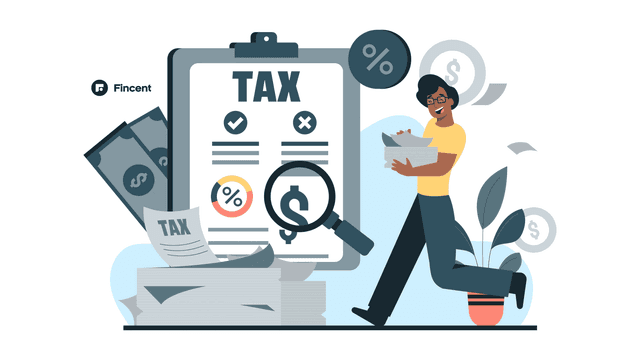Guide to Section 179 Deductions
If you're a small business, chances are you're scrimping and saving since you have limited resources, and the pandemic situation doesn't help at all. Read on for some expert guidance on how to claim deductions under Section 179 if you're purchasing equipment for your business.
If you're a small business, chances are you're scrimping and saving since you have limited resources, and the pandemic situation doesn't help at all.
Well, then it's time that you took advantage of Section 179 of the Internal Revenue Code (IRC): one of the most used tax deductions that small businesses all over the United States claim to save a ton of money.
Don't know what Section 179 is? Read on to know more.
What Is Section 179?
Infamous during yesteryears as the "SUV Tax Loophole" or the "Hummer Deduction", the IRS Section 179 was created to induce capital expenditure by businesses.
It allows your business to deduct the full purchase price of a piece of machinery, equipment, or even software that is purchased from your gross income for the financial year.
The monikers are from when the IRS allowed a $100,000 tax break on the purchase of any 6000-pound SUV to be used as business equipment. And no, the statutes have been altered now, so don't even think of buying one.
The tax break is extremely supportive to small and medium businesses, usually from the creative industry - although large businesses are not prohibited from benefitting from it too.
In fact, in a survey conducted by the National Federation of Independent Businesses, the largest small business federation in the United States, almost 78% of its members use Section 179 to avail the tax break it offers.
How Do You Know Which Purchases Qualify for Section 179?
There are strict criteria to which not only the purchase but the use of that purchase must conform. Otherwise, your plans to deduct the amount from your gross income would be shattered.
You have to keep in mind three things:
-
The Tangibility of the Purchase:
The asset that you're purchasing for your business must be tangible; that is, it should be seen, touched, and felt. Intellectual Property Rights purchases do not qualify to fall under the ambit of Section 179 of the IRS tax code. Within tangible assets, too, there are a few restrictions that you'll have to follow, which we'll talk about later in this section. -
The Asset Must Be Purchased:
The asset against which the business seeks to make the deduction must be bought and not leased or rented. -
Business-Related Use:
The asset has to primarily be engaged in the business. The threshold is 50%.
An asset like an SUV or computer can definitely be used in personal, non-work-related scenarios, of course. But as a business owner seeking to make a deduction, it is advised that you use the asset for business-related work as much as possible.
The amount of your deduction can be reduced in accordance with the percentage of time that the asset was used in a personal, non-work capacity. However, to avoid any discrepancies, it's best to maintain a log that tracks the personal and professional use of the asset.
Note: 2021 tax rates and brackets for your business In case of Business or profession income , the option to choose between the tax regimes is available only once for a particular business
Type of Purchases
In order to be qualified for deduction under Section 179, the purchases must be made between the 1st of January and the 31st of December of that year. Plus, the asset must be deployed for business use within the same span.
The types of purchases considered for the deduction are:
- Office furniture
- Office equipment
- Tangible property used in business
- Equipment (for instance, machines)
- Computers
- Software
- Business vehicles weighing more than 6,000 pounds (SUVs, generally)
While these purchases surely qualify for Section 179 deduction, there are some grey areas you should pay heed to.
For instance, the software purchase comes with the clause that it must be an "off-the-shelf" purchase. Translation: The software must not be custom-made for the business; it should be accessible to the general public as well.
Moreover, assets inherited or acquired from any member of your family, or any trusts, charitable organizations, or any other business are automatically disqualified.
Other things which are not eligible for Section 179 deduction include land and permanent structures. That said, property that is attached to the building but is not a part of its permanent structure may qualify for the same. The same goes for improvements in non-residential buildings, like fire suppression, HVAC systems, etc.
Get know basics about best tax filing and tax planning tips for you.
How Do Section 179 Deductions Work?
Well, the logic is pretty simple. The IRS allows deduction of a certain amount of money for an asset to a business. This certain amount of deduction is an expense popularly known as "depreciation", which is written off each year for a particular asset.
For example, you've just bought a printer for your office for $400. Now, that $400 is a business expense.
But rather than straightaway deducting $400 from the gross income, you can deduct only $40 each year, estimating that the printer would last you 10 years. This $40 deduction is called depreciation.
Basically, Section 179 allows a business to make the deduction for the whole purchase price in one go. This is taken as a Section 179 expense.
Section 179 can be of tremendous value to your small business, especially if you have a very limited amount of resources to deploy. The deduction helps you save tax and invest in newer, better technology and assets.
Nevertheless, the section also puts some limits on the amount deductible. Let's look at what they are below.
Owning a small business? Here is all about tax deadlines and various due date relaxations will reduce the compliance burden for businesses that have been struggling in the current crisis.
Section 179 Limits
Businesses can only claim a certain amount under this section, and there are other caveats to pay attention to before making any big decisions.
Net Income Is the Limit
A business cannot claim a deduction more than its net income in a year, even if the purchase price was higher than it.
Say you purchase a machine for office use for $70,000, but your net income for the year is only $50,000. Then, you cannot claim a deduction of more than the amount of your net income.
The Limit
Section 179 deduction is capped at $1,050,000 for 2021, up $10,000 from last year. The total equipment purchase limit has been set at $2,620,000 for 2021, implying that the Section 179 tax deduction you can claim is cut short by the amount you spend in excess of this limit.
If a firm spends $2,700,000 for total purchases, then it can only claim a deduction of $970,000 under Section 179.
Section 179: Vehicles
As mentioned above, some purchases have a grey area for qualification under Section 179, and vehicles are one of those purchases. The $100,000 tax break for SUVs that the IRS introduced in 2003 was heavily abused and soon rectified.
Lighter passenger vehicles, which could be used for personal purposes as well, can only be eligible for a deduction from $11,060-$11,160. The upper limit is for trucks and vans, but ambulances, hearses, taxis, and transport vans are eligible for the full deduction.
Heavier vehicles are eligible for a full Section 179 tax deduction. These include:
- Heavy construction vehicles
- Tractor-trailers
- Heavy non-SUV vehicles with a six-foot interior length for cargo
- Nine-seater vehicles (barring the driver)
- Cargo Vans
Section 179 and COVID-19
COVID-19 has hit businesses hard, forcing many to shut down for long periods of time. Many companies have also had to make changes to enhance sanitation within office or factory premises. This means extra expenditure on sanitation machines, gloves, masks, and even PPE kits.
Recognizing the same as a necessary expenditure, the IRS has allowed COVID-19 related expenses to be deductible under Section 179.
Temperature check stations, plexiglass shielding, and other covid related expenditures are included in the list of purchases qualified for tax deduction under Section 179.
Even if the business has received aid under the Paycheck Protection Program for COVID-19, its purchases are valid for consideration under Section 179, subject to the regular installment and 50% usage criteria.
In Closing
If you're a small business owner making every kind of effort to lower your tax burden, Section 179 can save the day. Yet, for many budding companies, navigating tax breaks is nothing short of a nightmare, leading to a lost opportunity to save costs.
Luckily, a professional bookkeeping service like Fincent is at your disposal. Find out how our professional bookkeepers can manage your books so that you can save time and money.
Related articles
Founder’s Guide to Annual Financial Planning
Learn what financial planning is, why it matters, and its key components to help your business grow better.
Read moreHow to Organize Your Financials for Tax Season
The only guide you’ll need to organize your financial records for a hassle-free tax season.
Read more
